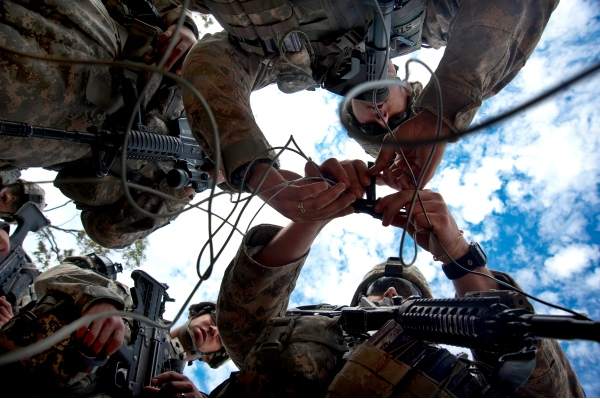The Defense Advanced Research Projects Agency (DARPA) is soliciting ideas to “dramatically” bolster the DoD’s short-range wireless transmission of power.
According to DARPA, the use of critical portable electronics on the modern battlefield has led to an increase in both the number and type of batteries required for essential equipment such as communications, positioning and targeting.

To be sure, warfighters on single-day missions often carry anywhere from 5-10 pounds of batteries simply to maintain functionality of essential gear.
Although there are portable power technologies with better energy-to-weight ratios than current state-of-the-art batteries, they tend to have lower efficiency when scaled down to form factors such as the AA and CR123.
Similarly, while cable-linked power systems have proven useful in consolidating the number of batteries to a single, high-capacity source that feeds power to multiple devices, they are often cumbersome, limit mobility and decrease mission flexibility.
As such, DARPA is requesting detailed submissions which provide “new insights, approaches and concepts” for the wireless transmission of power from a single high-capacity energy source to all peripheral electronics gear.
One possible implementation envisioned by the Pentagon is a high-energy fuel cell or rechargeable battery mounted to a pack or vest. The cell/battery would wirelessly transmit power to military equipment, including vest mounted radios, handheld GPS units and rifle mounted night-vision scopes.
A wireless distribution hub concept would effectively separate the power source from a warfighter’s gear, while reducing the logistical burden associated with fielding multiple battery types for each individual piece of electronics equipment.






